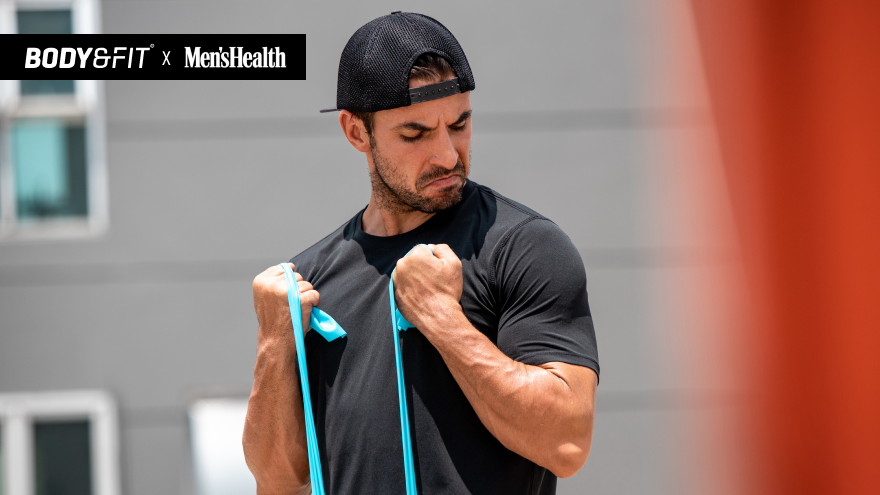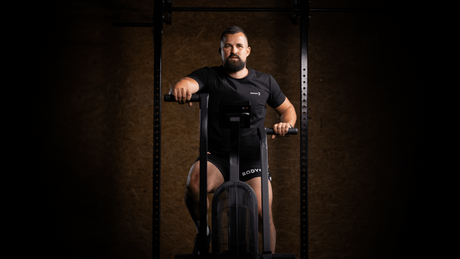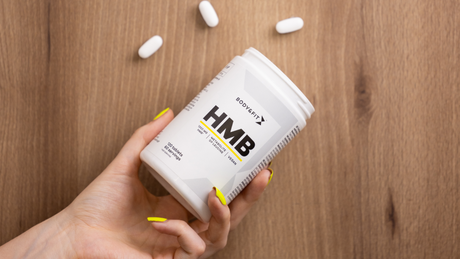Editors Martyn de Jong and Mart de Jong find out for you. Along the way, they share their personal tips, tricks and experiences in collaboration with Body&Fit. Want to follow their journey? Then read on, this time around Martyn shares his story.
Starting to bulk
When I first started bulking, I noticed almost immediately that this branch of sport is not always a bed of roses. Beforehand, I thought it would simply come down to eating a little more and lifting heavy — two things that usually come easy to me. However, now that we're a month into it, that turns out to be a classic error of judgement. Because bulking is hard work. At least, if you do it the right way.
You can also use bulking as a kind of honeymoon phase between periods of motivation. In other words, you pay attention to your nutrition around the summer months and you let go of the reigns for the rest of the year. This approach, with which there is nothing wrong, is how most strength athletes work. However, we wanted to do it differently for this experiment. After all, our aim is not to take it easy, but to gain maximum muscle mass. And it turns out — that approach requires serious discipline and dedication. Honeymoon? I don't think so.
Less is more for bulking
Nevertheless, our bulk didn't start with kilos of cottage cheese, chicken or chickpeas. No, we even went into a small deficit. Why, you ask? “If you want to bulk properly, you should preferably be dry,” says coach Jasper Schmitz. What you have at the beginning of your bulk in terms of fat, is still there 12 weeks later. That's why in some cases it's better to cut back. And yes, in our case a mini-cut back was necessary.
First you put the body under pressure, and then you can go for it.
Our fat percentage was in the 15 percent range, which was a bit too high to start with. So eating huge portions was not yet in the cards. “First become lean, then we can scale up”, says the coach. A second advantage is that you prepare your system for bulking. You put the body under tension first and then you can go for it — just like a rubber band. So said, so done. After a few weeks of training with a 20 per cent calorie deficit, our fat percentage dropped over 4 per cent. Finally, the party could begin.
Power food works wonders
Pizza, burgers, fries, or ice cream... What do you eat?" a friend asked. Unfortunately, my answer was not so exciting. Getting strong and big starts in the kitchen," I said, "so to build lean mass, we are eating pure power food during this challenge. Think of: oatmeal, peanut butter, eggs, rice, fruit, nuts, seeds, lean meat and lots of vegetables. “With all these products you provide your body with energy to train hard and recover well. The better the fuel, the better your body performs,” says Schmitz. “And you will see that in the end result. If you eat clean as you go along, you'll be much drier at the end.” All the meals we eat are as pure and healthy as can be. We call it lean bulking. The remarkable thing is that you also notice the effect in the gym. It's as if the energy goes straight to your muscles when you eat healthy products.
Supplements for gains and health
Speaking of which... Protein powders and bulking go together like holidays and sunshine. Firstly, they help you meet your daily protein requirements, up to 25 grams per scoop. Secondly, they are an easy and effective way to get lots of protein in a short time, without feeling full in your stomach. Ideal for small and large eaters. I take a total of two scoops a day: one in the morning through the oatmeal and one shake in the afternoon. My personal favourite is the Body&Fit Cookies & Cream. A flavour that never gets boring.
Besides protein powder there are several supplements on our daily menu. Think of creatine for extra strength and muscle endurance, Multi-vitamins to keep the micronutrients in check, and EAA for optimal recovery and muscle growth. A lot of training (5x per week) is a big drain on your body, so it is advisable to put the finishing touches on it. Every little helps.
Get the balance right
For some, what I'm about to say may sound logical, but for me it was a total surprise. I thought bulking was all about food....wrong! Bulking is just as much about training. The aim of bulking is to maximise muscle stimulation for growth. Of course, this part happens in the gym, not in the kitchen. Nutrition, of course, is the means by which you get the energy to train intensively, creating the stimulus and feeding the body to recover (grow). Are you still following? In other words: your nutrition and training should be completely in balance. Just eating a lot of food will not get you there without training hard, or vice versa. Maximum muscle growth can only be achieved by doing your best on both fronts.
Nobody is perfect
A famous poet once said: “I was born to make mistakes, not to fake perfection.” Okay, that was a Drake line on the sly, but he's got a good point. When bulking, you have days that go great and you have days that you'd like to forget... But don't give up if things don't go perfectly. As long as you have more good days than bad days, you are already going in the right direction. So forgive yourself if you mess up, or if you don't feel like training for a change. But afterwards, remind yourself why you started in the first place. Pick yourself up and keep going. Haste has never made anyone muscular.



